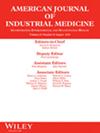Burden of Selected Chronic Conditions Among Adults of Prime Working Age (25–54) by 2022 Self-Reported COVID-19 and Long COVID History Compared to 2019 Pre-Pandemic Baseline Prevalence: Behavioral Risk Factor Surveillance System
Abstract
Introduction
Prior research has observed increased risks for numerous chronic conditions among individuals with Long COVID. Chronic conditions have been associated with employment limitations and increased economic hardships. Data from the Behavioral Risk Factor Surveillance System (BRFSS) present an opportunity to examine changes by employment status in the prevalence of a range of chronic conditions between 2019 (pre-pandemic) and, in 2022, by self-reported COVID-19 or Long COVID.
Methods
We assessed the prevalence of chronic conditions in 2022 by employment status and self-reported COVID-19 and Long COVID history using data from BRFSS for adults of prime working age (25–54 years) who were employed for wages, self-employed, unemployed less than 1 year, unemployed 1 year or more, or unable to work. For each chronic condition (coronary heart disease and myocardial infarction [combined], stroke, ever and current asthma, chronic obstructive pulmonary disease, kidney disease, diabetes, and arthritis), we generated adjusted prevalence ratios (aPRs) comparing 2022 prevalence by COVID-19/Long COVID category to prevalences among respondents in that employment status before the pandemic (2019).
Results
The prevalence of both asthma and diabetes increased significantly between 2019 and 2022 among respondents in all included employment categories and COVID-19/Long COVID histories combined. Among employed respondents with Long COVID in 2022, aPRs using 2019 prevalence figures for all employed respondents as a baseline for comparison had statistically significant elevations for every chronic condition assessed.
Conclusions
The increased prevalence of a range of chronic conditions between 2019 and 2022 among adults with Long COVID may present a burden for individuals, the workplace, the healthcare system, and the economy. Additional research in a longitudinal context could better quantify these associations. Efforts to prevent, identify, and treat Long COVID can reduce this burden.

 求助内容:
求助内容: 应助结果提醒方式:
应助结果提醒方式:


